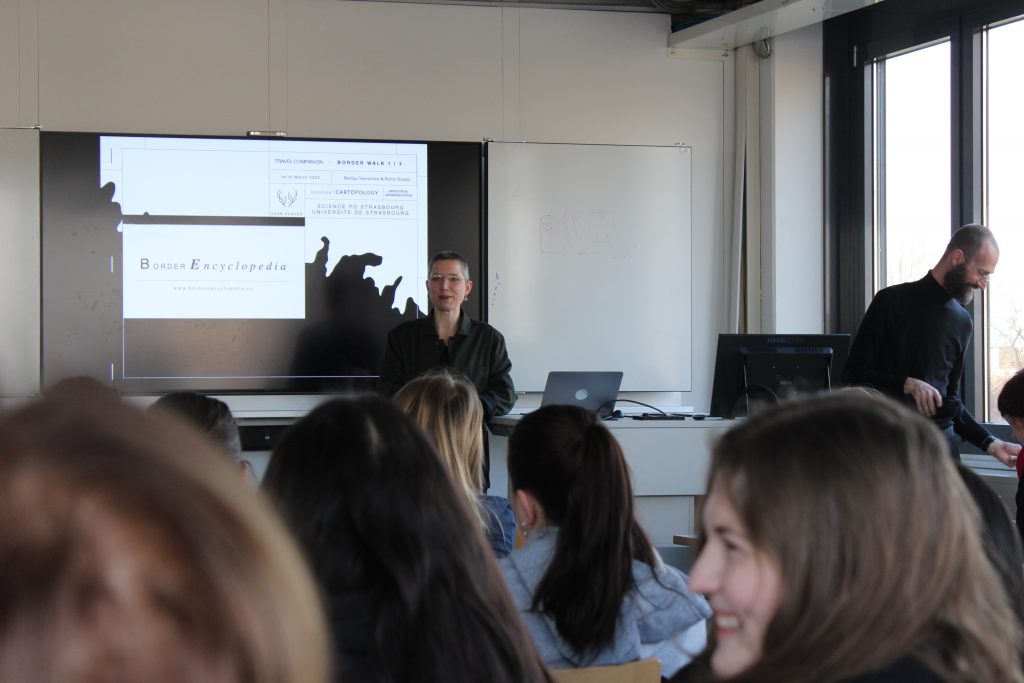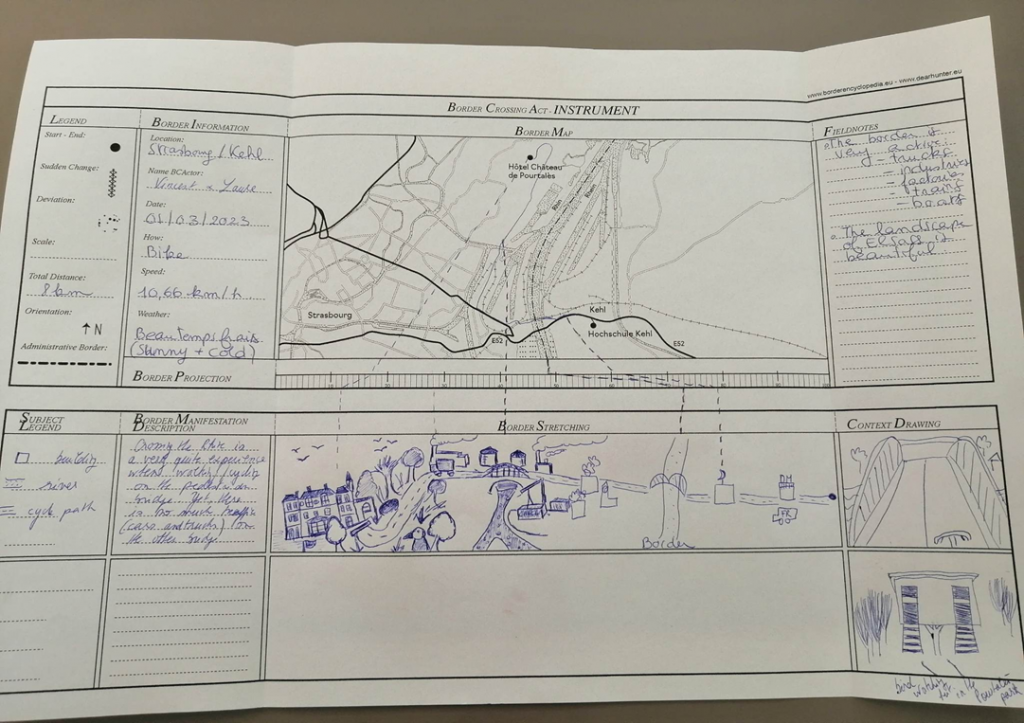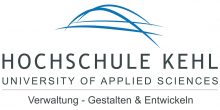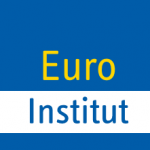Within the activities of the Jean Monnet Center and the Chair « European Narratives of the Border » of Jean Monnet Law, the first edition of Castle Talks 2023 was held on March 1 and 2, 2023.
Split between the Hochschule de Kehl and the Château de Pourtalès, it brought together seventy researchers, students and entrepreneurs. The conferences were numerous and the exchanges varied: cross-border health, Euroscepticism, cartopology or NASA programs and Catalan regionalism.
Cet article est également disponible dans la langue de Molière ici
Marlies Vermeulen and Remy Kroese are two cartopologists and entrepreneurs. Their discipline combines cartography and anthropology and consists of producing alternative maps and atlases through qualitative fieldwork. Founders of the company dearhunter, they survey border areas to observe the differences between countries, to photograph the local urban and rural fabric or to collect the experience of people crossing the border regularly or for the very first time.

Inaugurating the first « Border Walk » of the Center of Excellence on March 1, 2023, Marlies and Remy had two hours to detail their work during their morning conference.

There, at the Hochschule in Kehl, they emphasized the importance of maps and the way they are produced. Indeed, the representations are diverse: detailed, technical or artistic, varying according to the producer, from a group of office cartographers to the adventurer Alexander Humboldt. Moreover, these maps are often used by political leaders to define policies: geographical priorities and legal responsibilities in particular.
The conference was also an opportunity to present their work, especially in the Meuse-Rhine Euroregion, where three borders coexist, between Germany, the Netherlands and Belgium. In this region, they have gathered together a set of images, videos, testimonies and a document that they have elaborated: the Border Crossing Act instrument (BCA). It is a set of three maps (one main and two secondary) that allow to represent a place in three different ways and thus to represent it in its singularity.
After the conference, the two cartopologists equipped the audience with BCAs and enjoined them to pay attention to the elements they would encounter while crossing the French-German border. Equipped with their maps, the audience left the Hochschule of Kehl to go to the Château de Pourtalès.

After their journey along and across the border, the audience filled in the cards and these journeys and feelings were put together on paper and in a general discussion. The observations were diverse: French advertisements in Germany, differences in traffic lights or police cars, the presence of an old tank on the French border or the vitality of the Alsatian industrial port.
Germans, Americans and French, all together exchanging around the same theme: the border. All together trying to understand not our differences, but the elements that brings us together, that is the whole point of the network, of the center and of the chairs: to exchange, to learn from others, to learn also about the limits to the borders.





